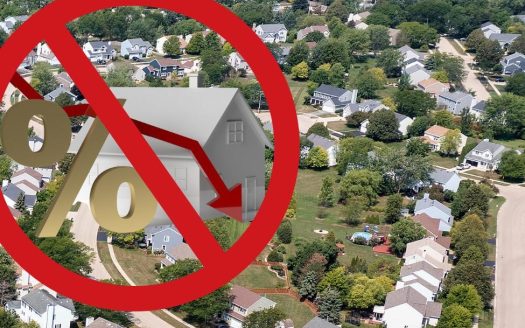Investor interest in reverse mortgages in 2025
[ad_1]
( FOA ) and the parent of the reverse lender, the major reverse mortgage companies recently released their third quarter 2024 earnings results, with FOA posting particularly strong numbers, while Ellington continues to highlight the versatility of Longbridge in its overall portfolio.
Recently, HousingWire's sat down with Reverse Mortgage Daily (RMD). UBS analyst Douglas Harter will take a step toward these companies here and now.
Looking ahead, there are some outstanding questions regarding the appearance of certain details within the Home Equity Conversion Mortgage () program, as well as other recent priorities in both the public and private sectors.
Past problems shaping future response
When asked about the top five reverse mortgage lenders Reverse Mortgage Financing (RMF) and the resulting liquidity crunch, Harter was asked if such a thing could trigger confidence given either investor pessimism about it happening or the government's reaction to it.
Finally, he explained.
“I think initially, it tends to be a concern about the near-term impact on liquidity and potential contagion to other areas,” he said. “There is also the question of how existing players will be affected. But as these issues are resolved and potential government measures such as HMBS 2.0 improve industry dynamics, this could create new opportunities.”
This is because such an event can signal how an organization will approach working with other liquidity providers, which can be a source of optimism. But investors need time to digest and assess the implications.
“These kinds of questions come after the initial results as the market starts to see how stakeholders and investors are reacting,” he said.
But it's likely that investors will be able to see what the companies are seeing, and that's the viability of an additional product for lenders' special reverse mortgage offerings. Both FOA and Ellington emphasized the strength of their products in recent earnings calls.
“Looking at the property side, especially with jumbo loans, there is clear potential for growth and efficiency,” Harter said. “If you can reduce origination costs through scale, that can be beneficial. This fits well with Ellington's strategy as they are a balance sheet-heavy business focused on creating long-term investments to support their dividend.”
FOA has more potential volatility because the company “aims to be less capital intensive than Longbridge or Ellington,” Harter said. “This has historically led to more volatility in their financial statements, with market corrections playing an important role – positive this quarter, but negative in previous ones.”
But as FOA's originator businesses scale, that volatility may decrease, he said. Most importantly, the company will have the ability to find long-term investors.
Expected changes
Since a large segment of the reverse mortgage industry (FHA) is intertwined with the HECM program, the expected transfer of power in the federal government has some impact on the viability of the space, depending on the policy type of the next HUD secretary. , the Ginnie Mae president or the FHA commissioner will choose to proceed.
Currently, Ginnie Mae is continuing the deadline report for HMBS 2.0, its complementary reverse mortgage securities program, earlier this year. issued by Ginnie Mae this summer and a final period report expected in the near future, according to the timeline proposed by Sam Valverde, acting president of Ginnie Mae.
But with the pending administration change and the insistence of some of President-elect Donald Trump's allies in Congress, it remains to be seen how things will develop until the transfer of power takes place. As for investors, HMBS 2.0 and specific product performance may play a role in their view of the reverse mortgage business.
“I think addressing HMBS 2.0 and evaluating the potential ongoing balance sheet or liquidity benefits that could come from that is something that people are definitely watching,” he said. “As we discussed earlier, proprietary products or the success of HomeSafe Second are other key areas of interest. People look for signs that the market may be growing. Of course, interest rates will change, which is largely beyond anyone's control.”
As for whether investors have a stake in the specifics of the actual transfer of power, that doesn't take much time in Harter's conversations with investors, he said.
“People don't yet have a strong vision of what can actually change,” he explained. “On the forward side, more attention is paid to considering the potential impact of for Fannie Mae and Freddie Mac. That seems to be where the current conversations are centered.
“No one yet knows what it will mean, how much it can achieve with or without Congress, and what it can achieve through Congress.” It's certainly on people's minds, but there's no clear idea yet of what it will look like.”
Related
[ad_2]





